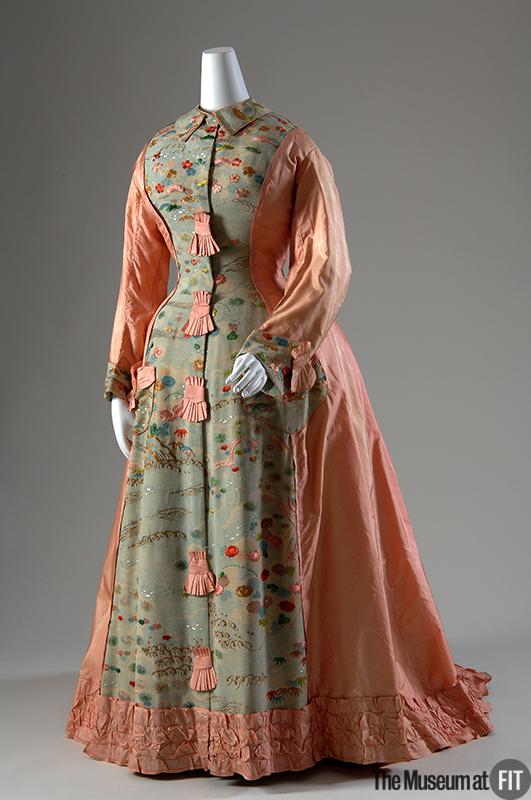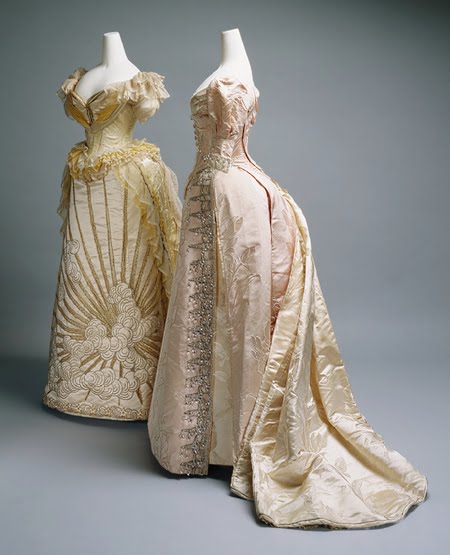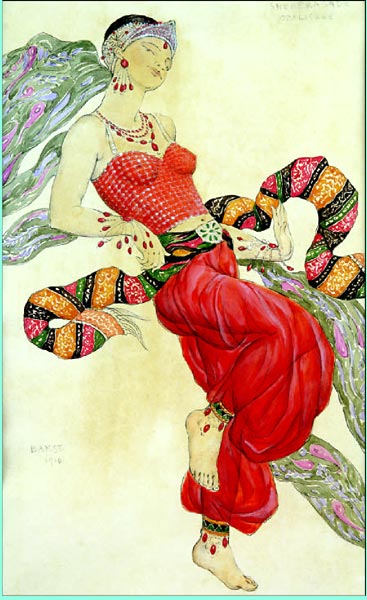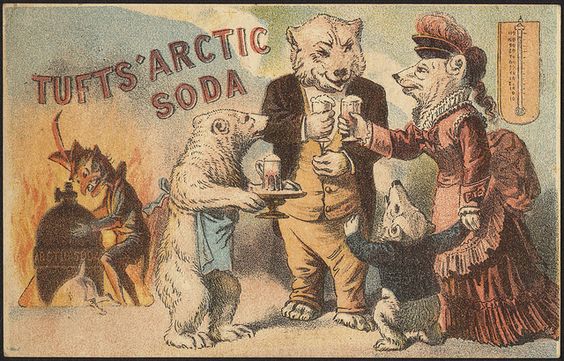Japonisme or Not?

by Sandy Vrooman, First published for the March/April 2013 issue of Finery

When trying to trace the influences of one culture to another, where does one start? In the case of Oriental influences on western fashion, we could go back to Marco Polo’s travels and the introduction of silk to European royalty; the flat Chinese fans used at Versailles, and the introduction of blue and white porcelain. There was also the use of Turkish musical themes in the music of Mozart and others. Are the Turks to be considered Oriental? They wore kimonos before anyone in Europe, perhaps because Turkey was a stop on the Silk Road and is on the Asiatic continent.
You begin to understand the problem of detailing the extent of intercultural exchanges. Perhaps it’s best to research a few garments starting with Japan. Japan remained a closed country until 1854 when Commodore Matthew Perry negotiated a trade agreement with the Meiji rulers. The introduction between east and west, and vise-versa had a notable effect on the fashion of both cultures. The ukiyo-e or woodblock prints popular at the turn of the 19th c. depicted subjects dressed in the kosode, or kimono (“clothing”).

Picture by Ukiyo Matabei (Ukiyo Matabei hitsu), from the series Mirror of Famous Ukiyo-e Artists. Museum of Fine Arts, Boston
The kimono’s influence on western style of dress coincided with Western women’s desire to free themselves from restraining petticoats and corsets. There are many late 1800’s and early 1900’s patterns with a kimono sleeve or collar detail. In turn, the Japanese began making bustle dresses out of Japanese cloth.
In the West, Charles Worth went in the opposite direction, using Japanese patterning. It is subtle but noticeably present in some of the quilted patterns of skirts and embellishments. In the dress at left, we see a replica of the Japanese flag or rising sun used on a Worth skirt.

By the late 19th/early 20th centuries, there was an explosion of Japonisme, the French term to describe a movement of Western artists (most notably, the Impressionists) who used Eastern styles to depict their own culture. Henri Toulouse Lautrec is the best example of this.
The big move to women wearing the kimono came about when the Ballet Russe started new productions in Paris. Painter and designer Leon Bakst, a Russian painter and scene- and costume designer embraced the style of the kimono in his designs that were considered quite outrageous for the time. Sketches for both costume design and promotional art of brightly colored, graphic print costumes greatly influenced contemporary fashion. Following the premiere of the Ballet Russe’s production of Scheherazade, Parisians clamored for harem trousers and turbans in boldly colored silks and velvets.

It was couturier Paul Poiret who adapted Bakst’s stage style into fashion with his own touch of simplicity. Poiret’s clothes were made from straight, rectangular pieces of fabric, much like the straight-seamed kimono. Indeed, his most notable creation was the kimono coat.

Asian influence on fashion waned until the 1960’s when men wore the Nehru Jacket. The Chinese Qipao or Cheongsam, an over-the-head dress with a tied raglan shoulder line, eventually replaced the popular Japanese kimono.
So, what might you wear to a Hanami or Cherry Blossom Viewing tea ceremony? The stylized lounge pajamas popular in the 1920s and 1960s would be appropriate. A tea dress with an Oriental flavor, or a kimono sleeved blouse. Of course, a colorful parasol or Oriental jewelry are perfect accessories.


Leave a comment